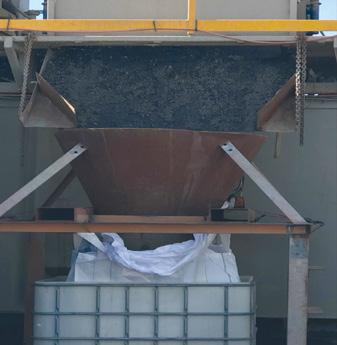
2 minute read
Ngāti Awa Wānanga
Bioremediation Report
The Kōpeopeo Bioremediation Project was formed through the tireless efforts of Sawmill Workers Against Poisons advocate Joe Harawira QSM and a team of dedicated volunteers, who supported and kept this project moving forward. Acknowledgement should also be mentioned to those many volunteers and various community members who are still working and monitoring the project in its current state. Contaminants were discharged into the Kōpeopeo Canal from the Pinex Sawmill, which operated between 1950 and 1989. This resulted in high concentrations of dioxins within canal sediments, posing a health risk to the community through contact and the eating of tuna from the canal.
Advertisement
The bioremediation project involves the removal of sediment, contaminated by dioxins, from a 5 kilometre section of the Kōpeopeo Canal and disposal at identified containment sites. Following a period of settling and drying, the sediment is bioremediated using techniques developed specifically for this project in the Te Ohu Mō Papatūānuku Bioremediation Trials. Bioremediation will use a combination of fungi, bacteria and fast growing plants to effectively alter the chemical composition of the contaminants with the aim of rendering the material harmless.
Part of Ngāti Awa presence at the remediation site is a Cultural Monitor, who records if any kōiwi (bones) or taonga (artefacts) are dredged up during the removal of sediment from the canal.
The process being used to record the observations on the shakers is monitored every hour and the materials detected are recorded, as indicated in the table below:
Material
1st hour 2nd hour 3rd hour 4th hour Gravel 5% 5% 0 0 Sandy sediment 10% 7% 0 0 Bone fragment 2% 1% 0 0 Rubbish 2% 2% 0 0 Fish species 1% 1% 0 0 Pumice 50% 50% 0 0 Pumice/gravel >3cm 5% 2% 0 0 Woody debris >3cm 20% 30% 0 0 Weed 0 0 0 0
Woody debris 5% 2% 0 0
Large stones 0 0 0 0 The chart is based on the average percentages for each week as recorded by the cultural monitor.
Additionally, now that the dredger is further away, the flushing and material must travel a great distance. This means it can take up to 20 minutes to half an hour to reach the plant. The Cultural Monitor is contracted to find koiwi and taonga, however she must also document what else is moving over the shakers to give a broader view on what is being observed. This is an ongoing project that Ngāti Awa will be involved in until the desired outcome is achieved.
To date, there have been a few animal bones and other items discovered but nothing confirmed by the cultural monitor or archaeologist as culturally significant. A process was implemented to ensure all operations meet the guidelines and protocols instituted by the project team and plant operators. A key part of operations has been to ensure the on-site discovery protocol is aligned with the Ngāti Awa Discovery Protocol and Bay of Plenty Regional Council Discovery Protocol.
It is worth noting that while the Cultural Monitor is contracted to the regional council, she is also monitoring the impacts on Ngāti Awa.









